Ceramic Decorative Plates: History and Techniques
This article explores the rich history and diverse techniques involved in crafting ceramic decorative plates, highlighting their cultural significance and artistic evolution through the ages.
Discover the ancient beginnings of ceramic plates, tracing their development from early utilitarian objects to intricate decorative pieces that reflect cultural heritage and artistic expression. The journey of ceramic plates started thousands of years ago, with the earliest known examples dating back to around 29,000 BC in the form of figurative pottery. Initially, these items were created for practical purposes, such as storage and cooking. However, as civilizations evolved, so did the artistry involved in their creation. By the time of the ancient Egyptians and Greeks, ceramic plates began to feature elaborate designs and were often used in ceremonial contexts, showcasing the artistic prowess of their makers.
Explore the various materials utilized in the creation of ceramic decorative plates, including clay types, glazes, and pigments that contribute to their unique aesthetic and durability. The choice of materials can greatly influence the final product, making it essential for artisans to select the right components for their artistic vision. For instance, the interplay of different clays and glazes can produce stunning visual effects, while also affecting the plate's functionality and longevity.
Learn about the different types of clay used in ceramics, including earthenware, stoneware, and porcelain, each offering distinct characteristics and artistic possibilities for decorative plates. The type of clay selected can significantly impact not only the appearance but also the structural integrity of the finished piece. Understanding these differences is crucial for both artists and collectors alike.
Examine the qualities of earthenware clay, known for its porous nature and vibrant colors, making it a popular choice for decorative plate designs. This type of clay is often easier to work with and can be fired at lower temperatures, allowing for a broader range of colors and textures. Its ability to absorb glazes makes it particularly suitable for vibrant, hand-painted designs.
Uncover the refined attributes of porcelain, celebrated for its translucency and strength, often used in high-end ceramic decorative plates. Porcelain is fired at higher temperatures, resulting in a denser, more durable material that can hold intricate designs with remarkable clarity. This quality has made porcelain a favorite among collectors and artists who seek to create pieces that are not only beautiful but also enduring.
Investigate the various glazing techniques employed in ceramic decoration, enhancing both the visual appeal and functionality of decorative plates. Glazes can be glossy or matte, clear or colored, and they serve multiple purposes, from adding a protective layer to enhancing the aesthetic qualities of the plate. Different glazing techniques can also create unique textures and finishes, contributing to the overall artistry of the piece.
Delve into the historical styles that have influenced ceramic decorative plates, from ancient civilizations to contemporary trends, showcasing the evolution of design and artistry. Each era brought its own unique styles and techniques, reflecting the cultural context of the time. The transition from utilitarian objects to decorative art pieces illustrates the growing appreciation for craftsmanship and aesthetic beauty.
Explore how ancient civilizations, such as the Chinese and Greeks, contributed to the development of decorative plate styles, reflecting their cultural values and artistic innovations. The Chinese, for instance, are renowned for their exquisite porcelain, while the Greeks are celebrated for their detailed painted pottery, which often depicted mythological scenes and daily life. These historical influences continue to inspire contemporary artisans around the world.
Analyze how modern art movements and technological advancements have shaped contemporary ceramic decorative plate designs, merging tradition with innovation. Today, artists are experimenting with new materials and techniques, pushing the boundaries of what ceramic art can be. The fusion of traditional methods with modern aesthetics has led to a revival of interest in ceramic plates as a form of artistic expression.
Understand the cultural importance of ceramic decorative plates across various societies, serving as symbols of heritage, artistry, and communal identity. These plates often tell stories and convey messages that resonate within specific cultural contexts. They can serve as heirlooms, passed down through generations, embodying the history and values of a family or community.
Examine the symbolism often embedded in decorative plate designs, reflecting beliefs, traditions, and stories that resonate within specific cultures. For example, certain motifs may represent fertility, prosperity, or protection, making each piece not just a decorative item but also a vessel of cultural significance.
Discuss the balance between functionality and decorative appeal in ceramic plates, highlighting how they serve both practical uses and aesthetic enjoyment. While some plates are designed solely for display, others maintain their utility, allowing them to be appreciated in everyday life. This duality enhances their value and appeal, making them cherished items in homes around the world.
Explore the various artistic techniques used in decorating ceramic plates, including painting, carving, and transfer printing, each offering unique textures and visual effects. The choice of technique can significantly alter the final appearance of the plate, showcasing the artist's skill and creativity.
Learn about the intricate hand-painting techniques that add personalized touches to ceramic plates, showcasing the skill and creativity of the artisan. Each brushstroke tells a story, and the individuality of hand-painted designs adds to the charm and uniqueness of the piece.
Discover the process of transfer printing, a technique that allows for the reproduction of detailed designs on ceramic plates, making art accessible and affordable. This method has revolutionized the ceramic industry, enabling artists to share their work with a broader audience while maintaining high-quality standards.
Gain insights into the best practices for preserving and caring for ceramic decorative plates, ensuring their longevity and beauty for generations to come. Proper care is essential to maintain the vibrancy of colors and the integrity of the designs.
Understand the proper cleaning techniques for ceramic plates to avoid damage while maintaining their vibrant colors and intricate designs. Gentle cleaning methods, such as using a soft cloth and mild soap, can help preserve the artwork without causing scratches or fading.
Explore effective storage recommendations that protect ceramic decorative plates from chips and scratches, preserving their aesthetic appeal and historical value. Storing plates in padded cases or on soft surfaces can prevent damage and keep them looking pristine for years to come.
- What materials are commonly used in ceramic decorative plates? Ceramic plates are typically made from various types of clay, including earthenware, stoneware, and porcelain, along with glazes and pigments.
- How can I care for my ceramic decorative plates? To care for ceramic plates, clean them gently with a soft cloth and mild soap, and store them in padded cases to prevent damage.
- What is the significance of decorative plates in different cultures? Decorative plates often symbolize cultural heritage and identity, reflecting the beliefs and traditions of the societies that create them.
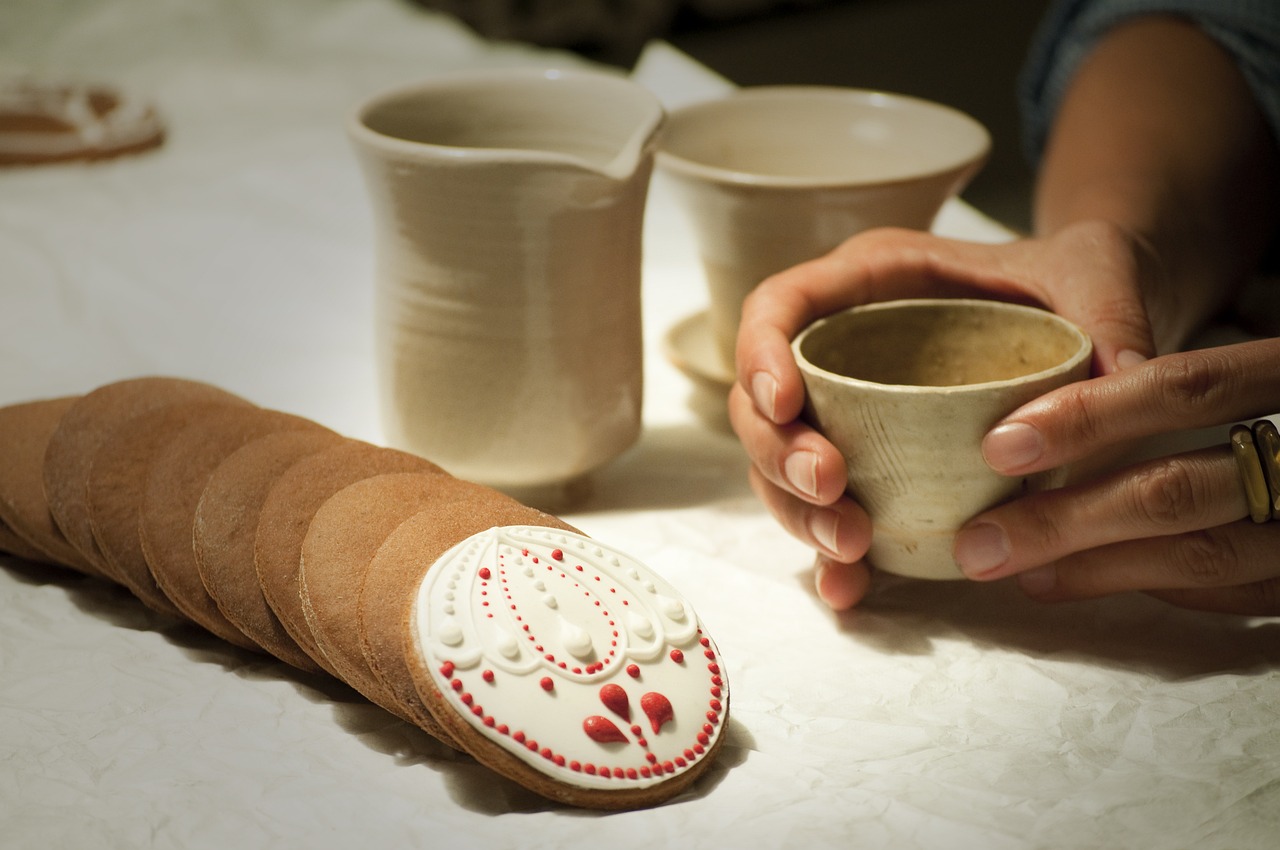
The Origins of Ceramic Plates
The history of ceramic plates is as rich and diverse as the cultures that created them. These beautiful objects have transitioned from simple, utilitarian items to intricate works of art that reflect the cultural heritage and artistic expression of various societies. The origins of ceramic plates can be traced back thousands of years, with the earliest examples dating to around 29,000 BC. These early creations were primarily functional, serving as vessels for cooking and storage. However, as civilizations evolved, so did their artistic endeavors, leading to the development of decorative plates that not only served a purpose but also conveyed stories and cultural significance.
In ancient cultures, such as those in China, Egypt, and Greece, ceramic plates began to take on more elaborate designs. The Chinese were particularly influential, developing high-fired ceramics that were both durable and aesthetically pleasing. The invention of porcelain during the Tang Dynasty (618–907 AD) marked a significant milestone in ceramic history, allowing for the creation of plates that were not only strong but also capable of showcasing intricate designs through glazing techniques. Similarly, the Greeks used pottery as a canvas to depict their mythology, daily life, and social customs, turning simple plates into narrative art pieces that provided insights into their culture.
As we moved into the Middle Ages, the craft of ceramics further evolved. The introduction of the potter's wheel allowed for more uniform shapes and sizes, making decorative plates more accessible to the masses. During this time, the Islamic Golden Age saw a flourish in ceramic arts, with intricate geometric patterns and calligraphy becoming prominent features of decorative plates. These designs were not merely decorative; they held deep cultural and religious meanings, often symbolizing the unity and diversity of the Islamic faith.
The Renaissance period brought about a revival of interest in classical art and culture, influencing ceramic design significantly. In Italy, the development of majolica—a tin-glazed pottery—allowed artisans to create vibrant, colorful plates that showcased both artistic skill and cultural narratives. This period also saw the rise of Delftware in the Netherlands, characterized by its blue and white designs, which echoed the Chinese porcelain styles but with a unique European twist.
Today, ceramic decorative plates continue to evolve, blending traditional techniques with modern aesthetics. Artists and craftsmen around the world draw inspiration from historical styles while experimenting with new materials and methods. The journey of ceramic plates from functional items to celebrated art pieces is a testament to human creativity and cultural expression. It reflects how art can transcend time and geography, connecting us to our past while inspiring future generations.
- Ancient Origins: Utilitarian objects dating back to 29,000 BC
- Chinese Influence: Development of high-fired ceramics and porcelain
- Greek Narrative: Pottery as a canvas for mythology and daily life
- Islamic Art: Geometric patterns and calligraphy during the Golden Age
- Renaissance Revival: Majolica and Delftware showcasing vibrant designs
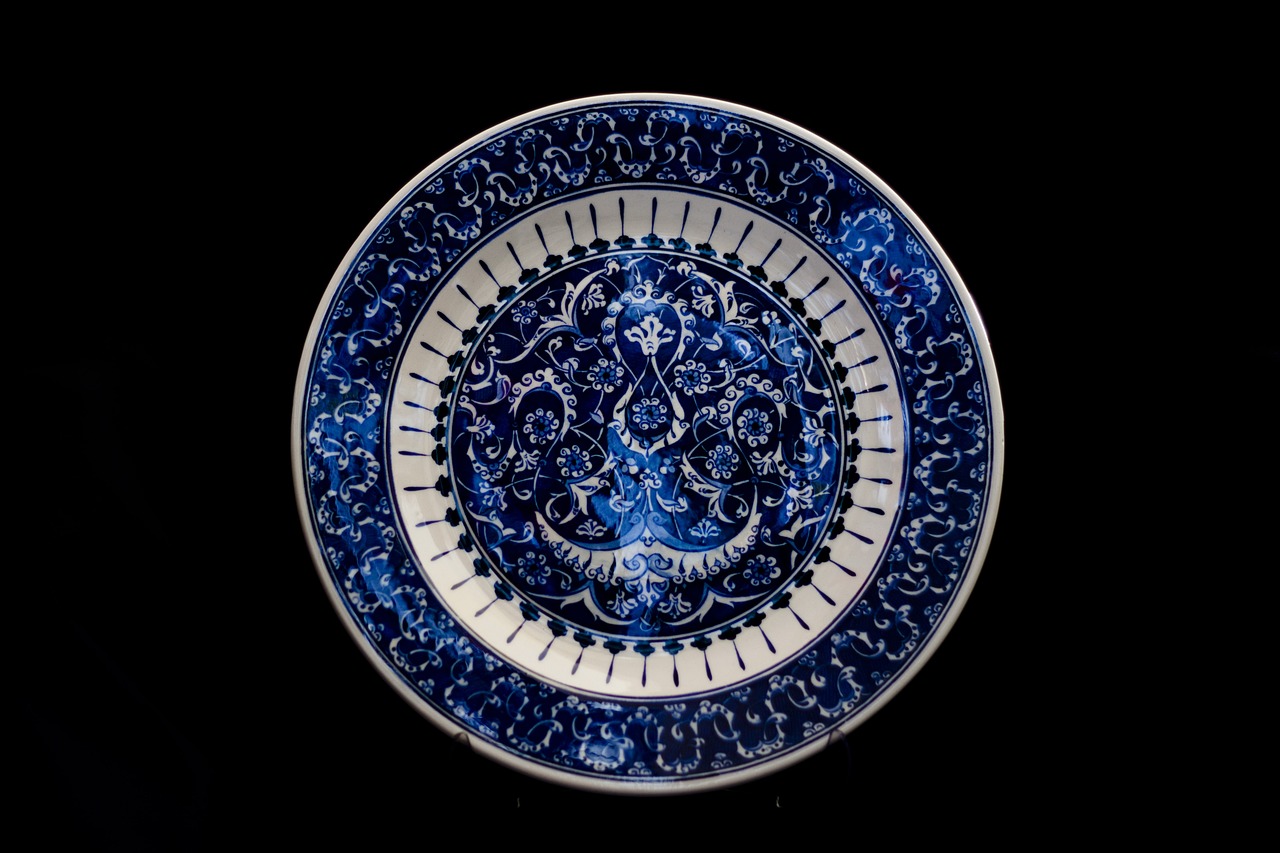
Materials Used in Ceramic Decoration
When it comes to crafting ceramic decorative plates, the choice of materials plays a crucial role in determining both the aesthetic appeal and the durability of the final product. The primary materials involved in this intricate art form include various types of clay, glazes, and pigments, each contributing to the unique characteristics of the plates. Let’s dive deeper into these essential components and understand how they enhance the beauty and functionality of ceramic plates.
At the foundation of every ceramic plate lies the clay, which serves as the canvas for the artist's vision. The three main types of clay used in ceramic decoration are earthenware, stoneware, and porcelain. Each type possesses distinctive qualities that influence the final appearance and use of the plates. For instance, earthenware is known for its porous nature, making it ideal for vibrant and colorful designs, while porcelain is celebrated for its translucency and strength, often reserved for high-end decorative pieces.
Earthenware clay is often the go-to choice for many artists due to its affordable price and versatile nature. This type of clay is typically fired at lower temperatures, resulting in a porous material that can absorb glazes effectively. The vibrant colors achieved with earthenware glazes can transform a simple plate into a stunning work of art. Its ability to hold intricate designs makes it a popular choice for decorative plates that tell a story or convey cultural significance.
On the other hand, porcelain stands out with its refined attributes. Known for its strength and translucency, porcelain is often used in high-end decorative plates that are both functional and aesthetically pleasing. The firing temperature for porcelain is significantly higher than that of earthenware, resulting in a denser and more durable product. This makes porcelain plates ideal for intricate detailing and delicate designs, often showcasing the artisan's skill and creativity.
Once the clay has been shaped into a plate, the next step involves applying a glaze, which not only enhances the visual appeal but also provides a protective layer. Glazes can vary in texture, color, and finish, ranging from glossy to matte. The choice of glaze can dramatically alter the look of a ceramic plate, making it shiny and vibrant or soft and muted. Various glazing techniques, such as dipping, brushing, or spraying, allow artists to experiment with different effects, adding depth and dimension to their creations.
Color pigments are another critical component in the world of ceramic decoration. These pigments are often derived from natural minerals and can be mixed into glazes or applied directly to the clay body. The choice of pigments allows for a vast array of colors, enabling artists to create stunning visual narratives on their plates. The combination of clay, glaze, and pigments culminates in a piece that is not only beautiful but also rich in cultural and artistic significance.
1. What types of clay are best for decorative plates?
Earthenware, stoneware, and porcelain are the most commonly used types of clay for decorative plates, each offering unique characteristics that influence the final design.
2. How do glazes affect the appearance of ceramic plates?
Glazes enhance the visual appeal of ceramic plates by providing color, texture, and a protective layer, significantly altering the final look of the piece.
3. Can I use decorative plates for food?
While many decorative plates are designed for aesthetic purposes, some are food-safe and can be used for serving. Always check the manufacturer's guidelines to ensure safety.
4. How should I care for my ceramic decorative plates?
To maintain their beauty, ceramic plates should be cleaned gently with a soft cloth and stored properly to avoid chips and scratches.
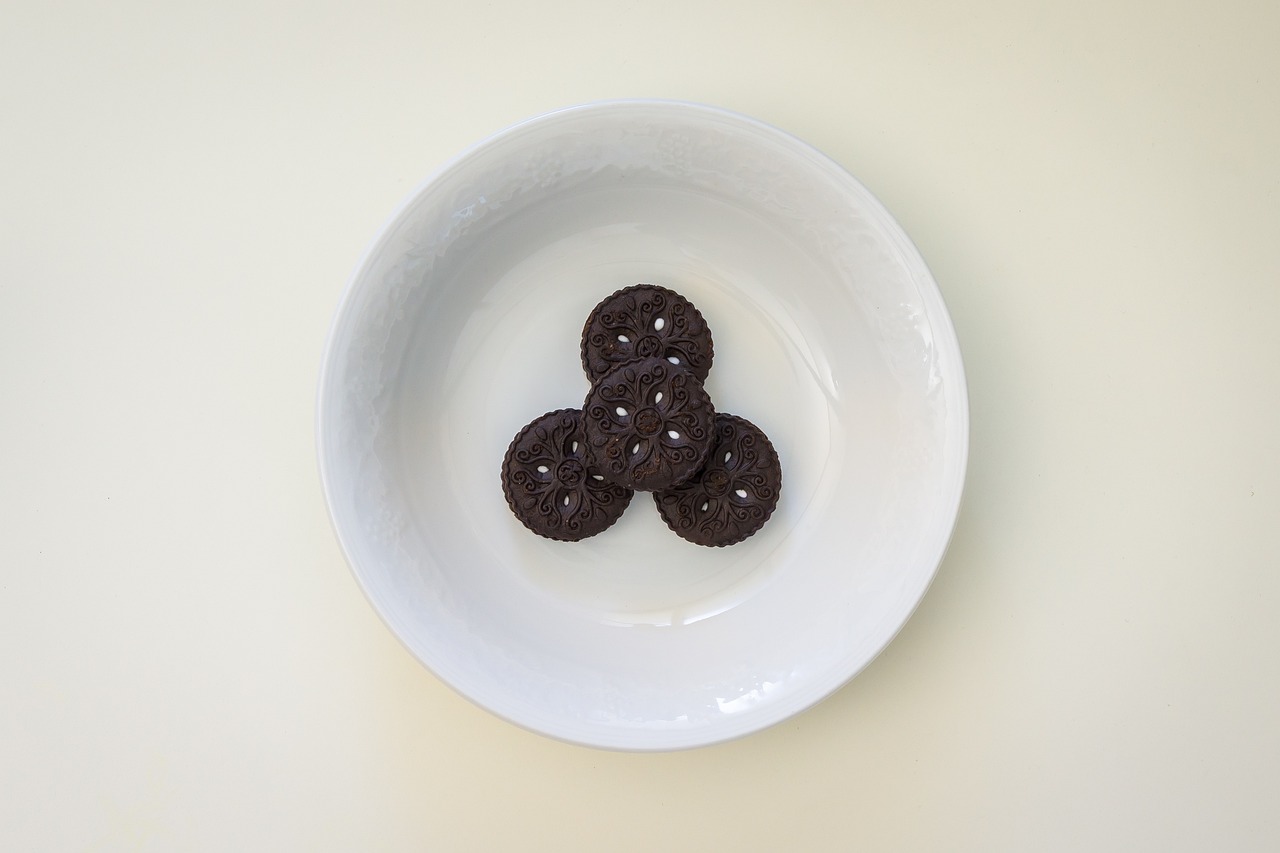
Types of Clay
When it comes to creating stunning ceramic decorative plates, the choice of clay plays a pivotal role. Each type of clay offers unique characteristics that can greatly influence the final product's look and feel. Let's dive into the three primary types of clay commonly used in ceramics: earthenware, stoneware, and porcelain. Understanding these distinctions can help both artists and collectors appreciate the artistry behind each piece.
Earthenware is perhaps the most ancient form of clay. Known for its porous nature, this clay is typically fired at lower temperatures, which gives it a soft texture and vibrant colors. Artists often love to work with earthenware because it allows for a wide range of glazing techniques that can result in eye-catching finishes. The warm hues of earthenware make it a popular choice for decorative plates, often featuring bold, colorful designs that reflect cultural themes. Its porous quality, however, means that it is less durable than other types of clay, making it more suitable for decorative rather than functional use.
On the other hand, stoneware is known for its durability and strength. Fired at higher temperatures than earthenware, stoneware becomes non-porous and can withstand more wear and tear. This type of clay is often used for both functional and decorative pieces, making it a versatile choice for artisans. Stoneware plates can exhibit a rich, earthy aesthetic, often enhanced by natural glazes that highlight the clay's texture. The ability to create intricate designs while maintaining durability makes stoneware a favorite among both potters and consumers.
Finally, we have porcelain, the epitome of elegance in the world of ceramics. This type of clay is fired at extremely high temperatures, resulting in a material that is both translucent and incredibly strong. Porcelain decorative plates often feature delicate patterns and intricate designs that can be quite breathtaking. The smooth surface and fine quality of porcelain make it ideal for high-end decorative pieces, often used in formal settings or as collectible art. However, due to its delicate nature, porcelain requires careful handling to prevent chips and cracks.
In summary, the choice of clay can dramatically affect the artistic possibilities and functional applications of ceramic decorative plates. Each type brings its own unique qualities to the table, influencing not just the aesthetics but also the cultural significance behind each piece. Whether it's the vibrant colors of earthenware, the robust nature of stoneware, or the refined elegance of porcelain, the world of ceramic plates is as diverse as it is beautiful.

Earthenware Characteristics
When we think of ceramic decorative plates, earthenware often comes to mind as one of the most accessible and vibrant options available. This type of clay is known for its porous nature, which allows it to absorb moisture and give it a unique texture. Unlike its more refined counterparts, earthenware is typically fired at lower temperatures, making it easier to work with and more adaptable for various artistic expressions. One of the most appealing aspects of earthenware is its ability to showcase vivid colors. Artisans often use bright glazes that can transform simple designs into eye-catching pieces of art.
Another characteristic that sets earthenware apart is its affordability. Due to the materials and techniques involved, earthenware decorative plates are often more budget-friendly than porcelain or stoneware. This accessibility has made it a popular choice for both amateur and professional ceramicists. Moreover, the handcrafted nature of earthenware means that each piece is unique, often reflecting the personal touch of the artist. This individuality is something many collectors cherish, leading to a growing appreciation for earthenware in the art world.
The versatility of earthenware also deserves mention. It can be shaped into various forms and decorated using multiple techniques, such as hand-painting, carving, or even stenciling. The porous surface allows for intricate designs that can be enhanced with glazes and underglazes, making it a favorite among artists looking to experiment with different styles. Whether it’s a rustic plate adorned with floral patterns or a modern piece featuring abstract designs, earthenware can cater to a wide range of tastes and preferences.
However, it’s important to note that while earthenware is beautiful, it does come with some limitations. Due to its porous nature, it’s not as durable as stoneware or porcelain, which means it may not be suitable for everyday use in all households. Instead, it often serves as a decorative item, brightening up spaces with its warmth and character. Understanding these characteristics helps both collectors and casual enthusiasts appreciate earthenware decorative plates for what they truly are: a blend of artistry and functionality.
In summary, earthenware decorative plates are celebrated for their vibrant colors, unique textures, and affordability. They provide a canvas for artistic expression while maintaining a sense of charm that can enhance any home decor. Whether you’re a seasoned collector or just beginning your journey into the world of ceramics, earthenware offers a delightful entry point into this captivating art form.
- What is earthenware made from? Earthenware is made from clay that is fired at lower temperatures, which makes it porous and suitable for vibrant glazing.
- Can earthenware plates be used for food? While many earthenware plates are designed for decorative purposes, some are safe for food use. Always check for food safety labels.
- How do I care for my earthenware plates? To maintain their beauty, clean earthenware plates with mild soap and water, and avoid harsh chemicals that can damage the glaze.
- Are earthenware plates dishwasher safe? Generally, it’s best to hand wash earthenware plates to preserve their colors and designs, as dishwashers can be too harsh.

Porcelain's Elegance
When it comes to the world of ceramics, porcelain stands out as a symbol of sophistication and refinement. Originating in China over a thousand years ago, porcelain has captivated artisans and collectors alike with its unique properties. Unlike other types of clay, porcelain is known for its translucency and strength, making it not just a medium for artistic expression but also a practical choice for high-quality dinnerware and decorative pieces.
One of the defining characteristics of porcelain is its ability to be fired at high temperatures, which results in a dense, non-porous material. This firing process not only enhances its durability but also allows for intricate designs that can be both painted and carved into the surface. The white, glossy finish of porcelain is often compared to fine china, giving it an air of elegance that is hard to replicate with other materials.
Artisans who work with porcelain often employ a range of techniques to create stunning decorative plates. For instance, underglaze painting allows for vibrant colors that remain vivid even after firing, while overglaze techniques can add layers of detail and texture. The combination of these methods enables artists to express their creativity in ways that are both traditional and innovative. The end result is a piece that not only serves a decorative function but also tells a story of craftsmanship and cultural heritage.
Interestingly, the appeal of porcelain extends beyond its aesthetic qualities. Many cultures have imbued porcelain with symbolic meaning, often associating it with wealth and status. In ancient China, porcelain was so highly valued that it was often referred to as "white gold." Today, it continues to be a sought-after material, with collectors and enthusiasts appreciating both its historical significance and its contemporary applications.
In summary, porcelain is more than just a medium for creating decorative plates; it is a canvas for artistic expression that has evolved over centuries. Its elegance lies not only in its beauty but also in the rich traditions and techniques that have shaped its development. Whether displayed on a wall or used for serving food, porcelain decorative plates remain a testament to the skill and creativity of their makers.
- What is the difference between porcelain and other types of ceramics?
Porcelain is fired at a higher temperature than earthenware or stoneware, resulting in a denser, more durable material that is also translucent.
- How can I tell if a plate is made of porcelain?
Porcelain plates typically have a smooth, glossy finish and produce a ringing sound when tapped. They are also usually lighter than they appear.
- Can porcelain plates be used in the microwave?
Most porcelain plates are microwave-safe, but it's essential to check for any metallic decorations that may not be safe for microwave use.
- How do I care for porcelain decorative plates?
To maintain their beauty, hand wash porcelain plates with mild soap and avoid abrasive scrubbers. Store them carefully to prevent chipping.
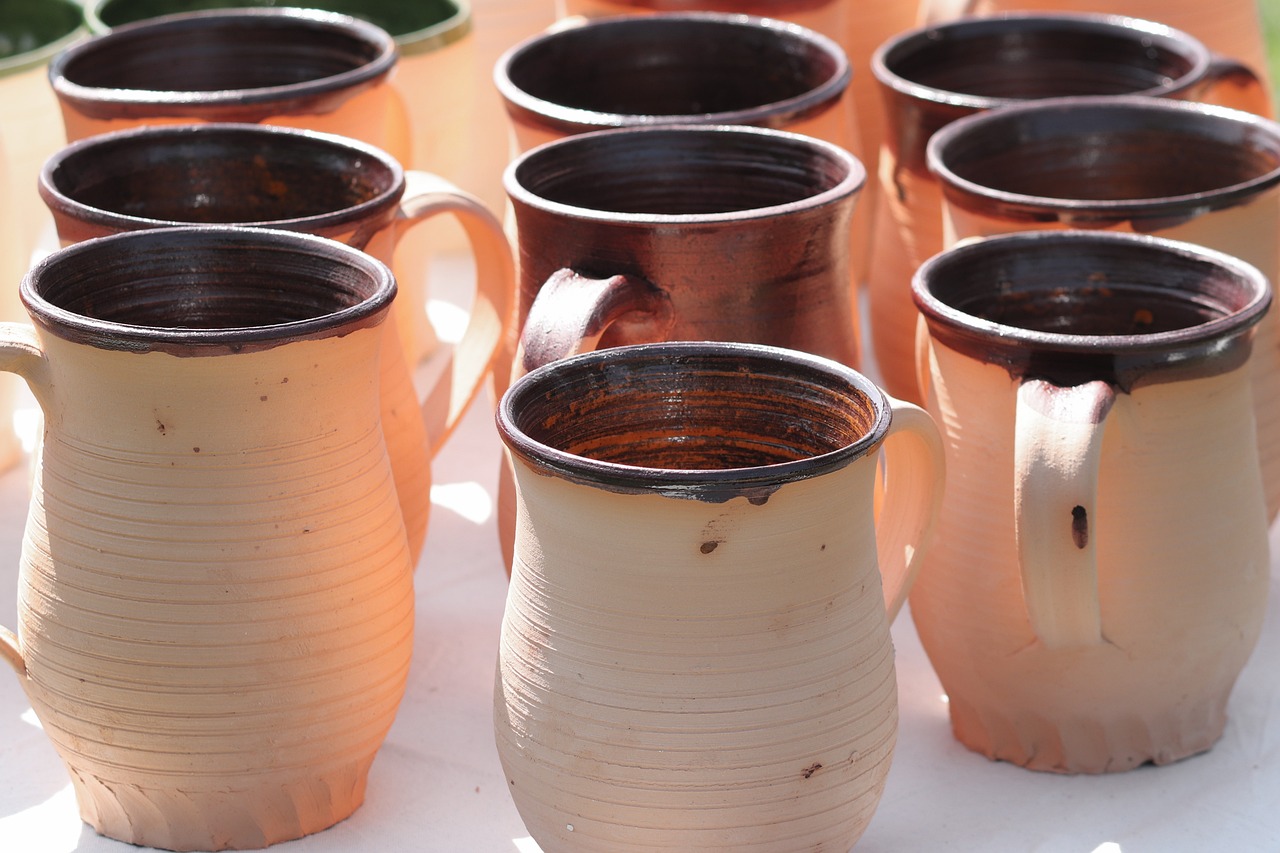
Glazing Techniques
When it comes to ceramic decorative plates, play a pivotal role in transforming a simple clay object into a vibrant piece of art. Glazing isn't just about aesthetics; it also serves practical purposes, such as making the surface waterproof and easy to clean. The beauty of glazing lies in its versatility, allowing artists to experiment with different finishes, colors, and textures. From a glossy shine that catches the light to a matte finish that invites touch, the choice of glaze can dramatically alter the perception of a plate.
One of the most fascinating aspects of glazing is the variety of techniques available to artisans. Here are some of the most popular methods:
- Clear Glaze: This is a transparent coating applied over the underglaze, enhancing the colors beneath while providing a shiny finish.
- Opaque Glaze: Unlike clear glazes, opaque glazes completely cover the clay body, allowing for bold colors and designs that stand out.
- Engobe: This technique involves applying a colored slip to the surface of the clay before firing, allowing for a unique texture and color palette.
- Raku Glazing: A traditional Japanese method, raku glazing involves removing the piece from the kiln while it's still hot and placing it in combustible materials, creating unpredictable and stunning effects.
Each technique has its own unique characteristics and challenges. For instance, while clear glazes can enhance the depth of color and create a glass-like finish, they also require careful application to avoid drips and unevenness. On the other hand, opaque glazes can be more forgiving, but they may obscure intricate details of the underlying design.
Moreover, the firing temperature plays a crucial role in the final outcome of the glaze. Different glazes react differently at various temperatures, which means that the same piece can look entirely different based on the firing conditions. This unpredictability is part of what makes ceramics so exciting! Artists often embrace these surprises, using them to inform their future work.
As we explore the world of ceramic plates, it’s essential to understand that glazing is not merely a finishing touch; it is an integral part of the artistic expression. Whether an artisan opts for a smooth, glossy finish or a textured, matte surface, the choice of glaze can tell a story, evoke emotions, and connect the viewer to the cultural heritage behind the piece.
Q: What is the purpose of glazing in ceramics?
A: Glazing serves both aesthetic and practical purposes. It enhances the visual appeal of ceramic pieces while also providing a waterproof and durable surface.
Q: Can I create my own glazes for ceramics?
A: Yes! Many artists experiment with creating their own glazes by mixing different materials, but it requires understanding the chemistry involved to achieve desired results.
Q: How do I know which glazing technique to use?
A: The choice of glazing technique depends on the desired effect, the type of clay used, and the intended use of the ceramic piece. Experimenting with different techniques can help you discover what works best for your style.

Historical Styles of Decorative Plates
The world of ceramic decorative plates is rich with history and cultural significance, showcasing a variety of styles that have evolved over centuries. From the ancient civilizations to modern-day artisans, decorative plates have served not just as functional items but as canvases for artistic expression. Each style reflects the values, beliefs, and artistic innovations of its time, making them fascinating artifacts of human creativity.
In ancient times, civilizations such as the Chinese and Greeks were pioneers in the art of ceramic decoration. The Chinese, for instance, are renowned for their exquisite porcelain plates adorned with intricate blue-and-white designs. These plates often depicted scenes from nature, mythology, and daily life, encapsulating the essence of Chinese culture. Similarly, the Greeks introduced the world to their iconic black-figure and red-figure pottery, where scenes of gods, heroes, and athletic competitions were masterfully painted, showcasing their artistic prowess and storytelling abilities.
As we journey through history, we encounter the influence of the Islamic Golden Age, which brought about a unique style characterized by geometric patterns and calligraphy. This period marked a significant shift in decorative plate design, emphasizing the beauty of intricate patterns and vibrant colors. The use of lusterware, a technique that involved applying metallic glazes to create a shimmering effect, became popular during this time, adding a touch of luxury to ceramic plates.
Fast forward to the Renaissance period in Europe, where the revival of classical themes influenced ceramic decoration. Italian majolica, known for its bright colors and tin-glazed earthenware, became a prominent style. Artists began to experiment with vibrant glazes and complex designs, often depicting biblical scenes, landscapes, and portraits. This period marked a significant shift towards decorative artistry, where plates were no longer just functional items but were cherished for their aesthetic appeal.
In the 18th and 19th centuries, the advent of industrialization brought about mass production techniques, making decorative plates more accessible to the general public. However, this era also saw a resurgence in handmade artistry, with movements such as Arts and Crafts emphasizing the value of craftsmanship. Artisans began to explore new techniques, such as underglaze painting and transfer printing, allowing for intricate designs to be reproduced while maintaining the uniqueness of handmade items.
Today, contemporary ceramic decorative plates continue to evolve, blending traditional techniques with modern aesthetics. Artists around the world draw inspiration from historical styles, creating pieces that tell stories and evoke emotions. Whether it’s a minimalist design or a vibrant explosion of colors, today’s decorative plates reflect a diverse array of influences, making them not just items of utility but also meaningful works of art.
In summary, the historical styles of decorative plates illustrate the dynamic relationship between culture and artistry. Each era has contributed to the rich tapestry of ceramic decoration, allowing us to appreciate not only the beauty of these pieces but also the stories they tell about our shared human experience.
- What are the most popular historical styles of decorative plates?
Some of the most popular styles include Chinese porcelain, Greek pottery, Islamic ceramics, Italian majolica, and Arts and Crafts designs. - How do modern techniques differ from traditional methods in ceramic decoration?
Modern techniques often involve industrial processes like transfer printing, while traditional methods emphasize hand-painting and craftsmanship. - What materials are commonly used in decorative plates?
Common materials include earthenware, stoneware, and porcelain, each offering unique characteristics and artistic potential. - How can I care for my decorative ceramic plates?
To care for decorative plates, avoid harsh chemicals during cleaning, use soft cloths, and store them safely to prevent chips or scratches.
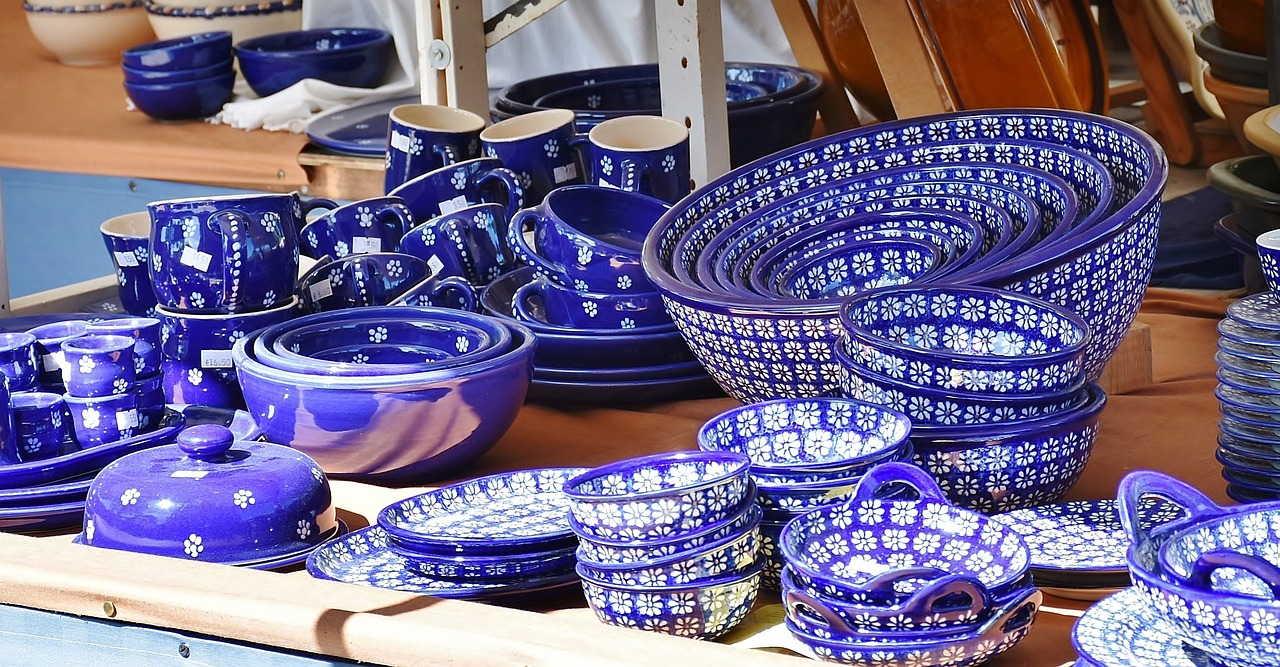
Ancient Civilizations
The journey of ceramic decorative plates can be traced back to the rich tapestry of ancient civilizations, where artistry and functionality intertwined seamlessly. Cultures such as the Chinese and Greeks were pioneers in this field, each contributing unique styles and techniques that have influenced generations of artisans. For instance, the ancient Chinese were known for their exquisite porcelain, which was often adorned with intricate blue and white designs that reflected their deep appreciation for nature and mythology. These plates weren't just for decoration; they were a testament to the craftsmanship and cultural identity of the time.
Meanwhile, the Greeks introduced a different aesthetic with their black-figure and red-figure pottery techniques. These methods allowed them to tell stories through imagery, depicting scenes from mythology, everyday life, and athletic competitions. The decorative plates served as both functional dining ware and as a medium for storytelling, showcasing the artistry of skilled potters and painters. The significance of these plates extended beyond mere utility; they were often used in ceremonial contexts, highlighting their importance in social and cultural rituals.
To better understand the contributions of these ancient civilizations, consider the following table that summarizes their key characteristics:
| Civilization | Key Contributions | Artistic Characteristics |
|---|---|---|
| Chinese | Development of porcelain and intricate glaze techniques | Blue and white designs, nature motifs |
| Greek | Black-figure and red-figure pottery techniques | Storytelling through imagery, depictions of mythology |
As we delve deeper into the artistic evolution of ceramic decorative plates, it becomes evident that these ancient civilizations laid the groundwork for future innovations. Their ability to blend utility with artistic expression not only enriched their own cultures but also paved the way for a global appreciation of ceramic art. The legacy of these early artisans continues to inspire modern ceramicists, who draw from their techniques and themes to create contemporary works that resonate with today's audiences.
In conclusion, the decorative plates from ancient civilizations are more than just artifacts; they are windows into the past, offering insights into the values, beliefs, and artistic innovations of their time. Whether through the delicate brushstrokes of Chinese porcelain or the dynamic narratives of Greek pottery, these plates embody a rich cultural heritage that remains significant in the world of art today.
- What are ceramic decorative plates made of? Ceramic decorative plates are typically made from various types of clay, including earthenware, stoneware, and porcelain, each offering unique properties.
- How can I tell if a decorative plate is antique? Look for signs of wear, unique glazing techniques, and markings that indicate the era or maker. Consulting an expert can also help determine authenticity.
- Are decorative plates safe for food use? While many decorative plates can be used for food, it's essential to check if they are food-safe, especially those with intricate glazes that may contain harmful substances.

Modern Influences
The world of ceramic decorative plates has been profoundly shaped by modern influences, blending traditional craftsmanship with contemporary aesthetics. As we dive into this fascinating evolution, it’s clear that artistic expression has taken on new dimensions, driven by cultural shifts, technological advancements, and the ever-changing tastes of consumers. Have you ever wondered how a simple plate can reflect the spirit of an era? Well, that's exactly what modern ceramic artists are achieving today.
One of the most significant shifts in the realm of ceramic design is the integration of **modern art movements**. Artists are no longer confined to historical styles; instead, they draw inspiration from various sources, such as **abstract expressionism**, **minimalism**, and even **pop art**. This fusion of styles has led to plates that are not just functional items but also vibrant pieces of art that can evoke emotions and provoke thought. For instance, a plate adorned with bold colors and geometric shapes might remind one of a **Kandinsky** painting, while another with soft pastels and flowing lines could reflect the influence of **Impressionism**.
Moreover, technological advancements have revolutionized the way ceramic plates are produced and decorated. The introduction of digital printing techniques has made it possible to reproduce intricate designs with precision and speed. This means that artists can create limited-edition pieces that maintain the charm of handmade items while ensuring accessibility to a broader audience. Imagine being able to own a plate that features a stunning reproduction of a famous artwork or a custom design that reflects your personal style—all made possible through modern technology.
Additionally, the rise of **sustainable practices** in the ceramics industry has influenced modern designs. Artists are increasingly aware of their environmental impact and are opting for eco-friendly materials and processes. This shift not only enhances the aesthetic appeal of decorative plates but also resonates with consumers who value sustainability. For example, plates made from recycled materials or those that utilize natural pigments are becoming more popular, allowing buyers to make a statement about their values while enjoying beautiful art.
Furthermore, the global exchange of ideas and cultures has enriched the ceramic art scene. With the internet and social media, artists from different corners of the world can share their work, techniques, and inspirations. This cross-pollination of styles has led to innovative designs that blend elements from various cultures, resulting in unique pieces that tell a story. For instance, a decorative plate might feature traditional Japanese motifs combined with contemporary Western design elements, creating a dialogue between past and present.
In summary, modern influences on ceramic decorative plates are a testament to the dynamic interplay between tradition and innovation. As artists continue to explore new techniques and ideas, the world of ceramics remains vibrant and ever-evolving. So, the next time you admire a decorative plate, consider the rich tapestry of influences that have shaped its creation—it's not just a plate; it's a piece of history, art, and culture.
- What materials are commonly used in modern ceramic decorative plates? Modern ceramic plates are often made from various types of clay, such as earthenware, stoneware, and porcelain, along with a variety of glazes and pigments.
- How can I tell if a ceramic plate is handmade? Handmade plates often exhibit slight imperfections and unique characteristics that distinguish them from mass-produced items. Look for variations in shape and design.
- Are decorative plates safe for food use? Many decorative plates are designed primarily for display and may not be food-safe. Always check the manufacturer's guidelines before using them for food.
- How can I care for my ceramic decorative plates? To maintain the beauty of your plates, clean them gently with mild soap and water, and avoid abrasive materials that could scratch the surface.

Cultural Significance of Decorative Plates
The world of ceramic decorative plates is not just about aesthetics; it dives deep into the cultural significance that these pieces hold across various societies. From ancient times to modern-day, these plates have served as more than mere decorative items. They are symbols of heritage, reflections of artistry, and vessels of communal identity. In many cultures, decorative plates are often seen as a way to tell stories, preserve traditions, and express values that resonate within the community.
For instance, in Chinese culture, decorative plates often feature intricate designs that symbolize prosperity, good fortune, and harmony. The colors and motifs used are not arbitrary; they are deeply rooted in cultural beliefs and traditions. Similarly, in Mediterranean cultures, decorative plates might showcase vibrant colors and designs that reflect the local landscape, flora, and fauna, celebrating the region's natural beauty and cultural history.
Moreover, the designs on these plates frequently carry symbolism that speaks volumes about the beliefs and narratives of a society. For example, floral patterns might represent fertility and growth, while geometric shapes could signify the interconnectedness of life. Such designs are not just for visual appeal; they are imbued with meanings that connect people to their past and to each other.
One of the fascinating aspects of decorative plates is their dual role as both functional and ornamental objects. While they can serve a practical purpose—like holding food during a feast or being used in ceremonies—they also provide aesthetic enjoyment. This balance between functionality and decoration is what makes ceramic plates so unique. They can be displayed prominently in homes, becoming conversation starters, or passed down through generations as treasured heirlooms.
In many cultures, the act of creating and decorating these plates is a communal activity, often involving families or groups of artisans. This collaboration not only strengthens community bonds but also ensures the transfer of skills and knowledge from one generation to the next. The plates become a canvas for cultural expression, where each stroke of paint or carving tells a story of the people who made it.
In conclusion, the cultural significance of decorative plates extends far beyond their visual appeal. They are a testament to the rich tapestry of human experience, reflecting the values, beliefs, and stories of the societies that create them. Whether displayed on a wall or used during a festive gathering, these plates serve as enduring reminders of our shared heritage and artistic evolution.
- What materials are commonly used in decorative plates? Decorative plates are typically made from various types of clay, such as earthenware, stoneware, and porcelain, and are often adorned with glazes and pigments.
- How can I tell if a decorative plate is antique? Look for signs of wear, unique markings, and the type of materials used. Consulting an expert can also help in authentication.
- Are decorative plates safe for food use? While some decorative plates are safe for food, others may not be. Always check if the plate is labeled as food-safe before using it for serving.
- How should I clean my decorative plates? Use a soft cloth and mild soap, avoiding harsh chemicals that could damage the glaze or design.
- What is the best way to store decorative plates? Store them in a padded environment, away from direct sunlight and potential hazards, to prevent chips and scratches.
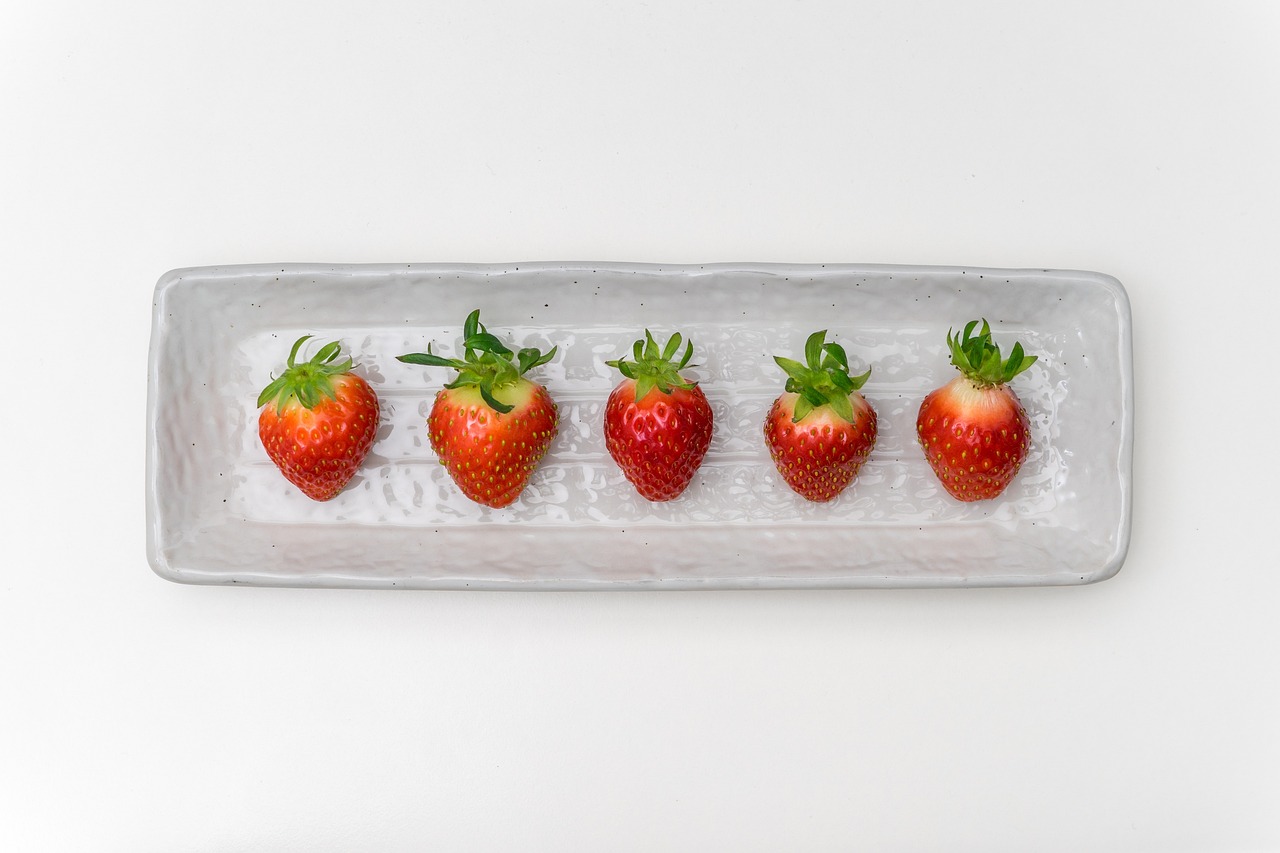
Symbolism in Design
The world of ceramic decorative plates is not just about aesthetics; it is deeply intertwined with cultural narratives and symbolic meanings. Each design tells a story, often reflecting the beliefs, traditions, and values of the society from which it originates. For instance, in many cultures, specific colors and patterns are imbued with significance. A plate adorned with blue motifs might symbolize tranquility and peace, while vibrant reds could represent passion or prosperity.
In various cultures, the imagery depicted on ceramic plates serves as a visual language. For example, in Chinese ceramics, the use of dragons and phoenixes is not merely decorative; these creatures symbolize power and good fortune. Similarly, in Mediterranean cultures, patterns inspired by nature, such as olive branches or floral designs, often signify abundance and fertility. This connection between design and meaning enriches the viewing experience, inviting observers to delve deeper into the stories behind the art.
Moreover, the symbolism can extend beyond the visual elements to include the very act of creating these plates. For artisans, the process of crafting a decorative plate can be seen as a ritual, a way of connecting with their heritage and expressing their identity. The techniques used, whether it be hand-painting or carving, often carry historical significance that resonates with the artisan's community. This cultural connection transforms a simple decorative item into a vessel of communal identity and pride.
To illustrate the various symbols found in ceramic decorative plates, here's a brief overview of some common motifs:
| Symbol | Meaning |
|---|---|
| Dragon | Power and good fortune |
| Olive Branch | Peace and abundance |
| Flower Patterns | Beauty and fertility |
| Geometric Shapes | Harmony and balance |
In conclusion, the symbolism embedded in ceramic decorative plates is a testament to the rich tapestry of human culture. Each piece serves not only as a decorative item but also as a reflection of the values, beliefs, and stories of the people who create and use them. As we appreciate these beautiful artifacts, we also engage with the deeper meanings they convey, making each plate a unique conversation starter that bridges generations.
Q: What do different colors in ceramic plates symbolize?
A: Different colors can represent various meanings; for example, blue may symbolize tranquility, while red often signifies passion or prosperity.
Q: How can I tell the cultural origin of a decorative plate?
A: The patterns, motifs, and materials used can often give clues about a plate's cultural background. Researching specific designs can help identify their origins.
Q: Are decorative plates purely for display?
A: While many decorative plates are designed for display, they can also serve functional purposes, such as serving food or being part of a special occasion.
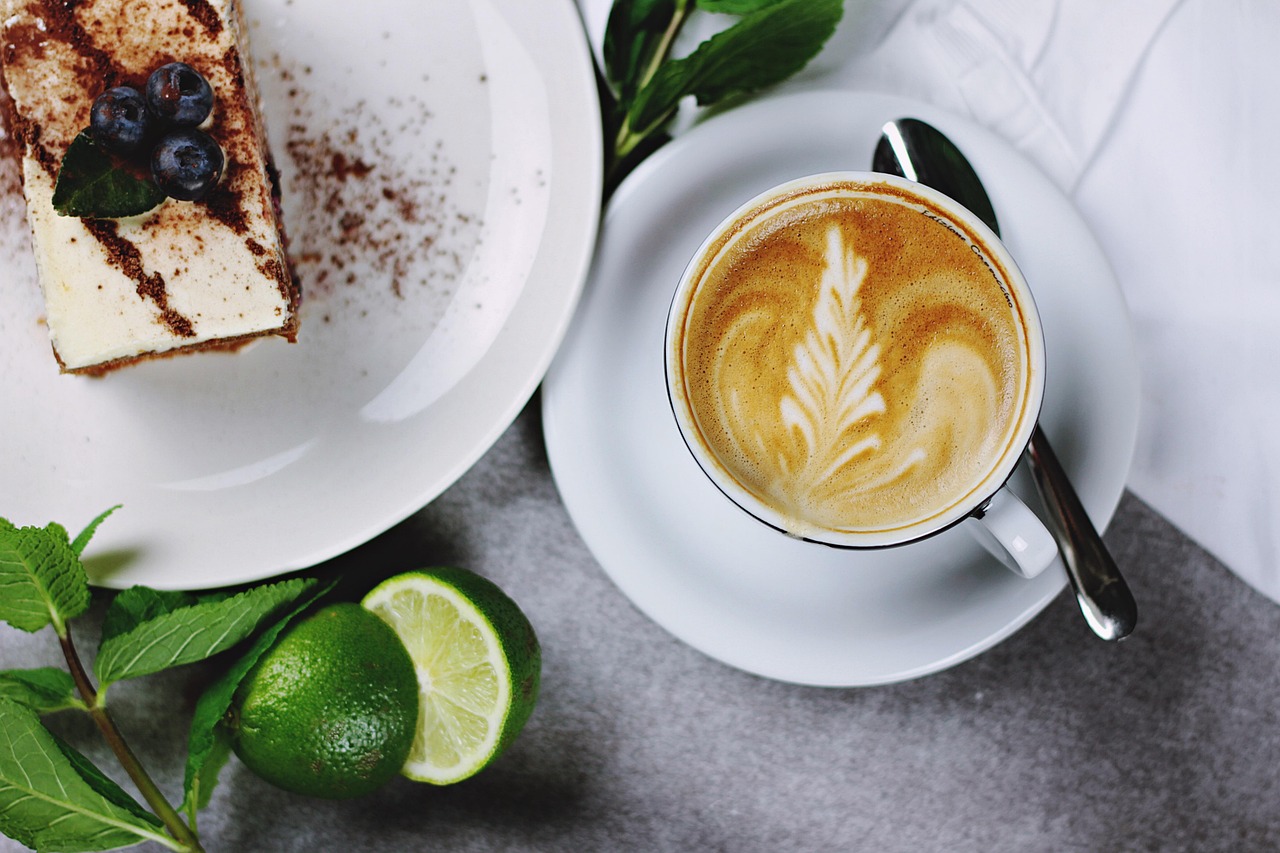
Functional vs. Decorative
When we think about ceramic decorative plates, it's easy to get lost in their beauty and artistic flair. However, there's a fascinating duality at play here: these plates are not just pretty faces; they serve practical purposes too. Imagine a beautifully crafted plate adorned with intricate designs, sitting on your dining table, ready to hold a delicious meal. It’s a perfect blend of functionality and decorative appeal, much like a well-tailored suit that’s both stylish and comfortable.
Historically, ceramic plates were primarily utilitarian. They were used for serving food, and their designs often reflected the culture and craftsmanship of the time. Over the years, as societies evolved, so did the role of these plates. Today, while many ceramic plates are still functional, they have also become a canvas for artistic expression. This evolution raises an intriguing question: when does a plate transition from being a mere tool for dining to a cherished piece of art?
In many households, ceramic plates serve a dual purpose. They are used to serve meals on special occasions, showcasing the culinary delights prepared within. Yet, they also hang on walls, displayed as art pieces that tell stories of heritage and craftsmanship. This duality can be summarized in the following ways:
- Functional Use: Plates are designed to hold food, making them essential for dining experiences.
- Decorative Use: Plates can be displayed as art, becoming focal points in home decor.
However, the balance between functionality and decoration can sometimes be challenging. For instance, a plate that is stunning to look at may not always be practical for everyday use. Some decorative plates are made with delicate materials that can’t withstand the rigors of daily dining. On the other hand, functional plates may lack the artistic flair that makes them visually appealing. Thus, artisans often strive to create pieces that beautifully marry both aspects, ensuring that their creations are not only visually striking but also durable and practical.
Ultimately, the choice between functional and decorative ceramic plates often comes down to personal preference and context. For example, during festive gatherings, you might opt for a vibrant, ornate plate that adds charm to the table setting, while on a regular day, a simple, sturdy plate might suffice. This interplay between functionality and decoration is what makes ceramic plates so versatile and beloved in homes around the world.
- Can decorative plates be used for serving food? Yes, many decorative plates are designed to be functional, but it's essential to check if they are food-safe.
- How do I know if a ceramic plate is purely decorative? Decorative plates typically have a label indicating they are not intended for food use, and they may be made from more fragile materials.
- What is the best way to display decorative plates? You can use plate hangers, shelves, or dedicated display cases to showcase your decorative plates effectively.

Techniques in Plate Decoration
The art of decorating ceramic plates is a fascinating journey that combines creativity, tradition, and technical skill. Various techniques have emerged over the centuries, each offering unique textures and visual effects that enhance the beauty of these decorative pieces. From the delicate strokes of hand-painting to the precision of transfer printing, the methods employed in plate decoration reflect the rich tapestry of cultural heritage and artistic expression.
One of the most captivating techniques is hand-painting. This method allows artisans to infuse their personal touch into each piece, creating one-of-a-kind works of art. The process begins with selecting high-quality paints that are specifically formulated for ceramics. Artists often use fine brushes to apply intricate designs, ranging from floral motifs to intricate geometric patterns. The beauty of hand-painting lies not only in the final product but also in the skill and creativity that each artisan brings to the table. The time-consuming nature of hand-painting means that each plate tells a story, making it a cherished item for collectors and enthusiasts alike.
In contrast, transfer printing has revolutionized the way designs are applied to ceramic plates. This technique involves transferring a pre-printed design onto the surface of the plate using a special paper and water. It allows for the reproduction of detailed images with remarkable accuracy, making art accessible to a broader audience. Transfer printing can reproduce everything from classic artworks to modern graphics, providing endless possibilities for decoration. While it may lack the personal touch of hand-painting, it offers a different kind of beauty through its precision and versatility.
Another intriguing technique is carving, where artisans create textures and patterns directly on the surface of the clay before it is fired. This method adds a three-dimensional quality to the plates, making them visually striking and tactile. Carving can be done freehand or with the aid of tools, allowing for a range of designs from simple lines to elaborate scenes. The interplay of light and shadow on carved surfaces brings an added dimension to decorative plates, captivating viewers and inviting them to explore the details.
The choice of technique often depends on the desired aesthetic and the cultural context of the piece. For example, traditional Japanese ceramics often emphasize simplicity and natural beauty, which is reflected in their use of hand-painting and subtle glazes. On the other hand, Western ceramics may embrace bold colors and intricate designs, showcasing the versatility of transfer printing and carving techniques.
In summary, the techniques employed in plate decoration are as diverse as the cultures they represent. Each method carries its own history and significance, contributing to the rich narrative of ceramic art. Whether through the personalized touch of hand-painting, the precision of transfer printing, or the tactile allure of carving, these techniques transform simple clay into stunning decorative pieces that resonate with beauty and meaning.
- What is the most popular technique for decorating ceramic plates? Hand-painting is often considered the most traditional and cherished technique, allowing for unique, personalized designs.
- Can I use my decorative plates for food? While some decorative plates are food-safe, it's essential to check the manufacturer's guidelines, as certain decorations may not be suitable for food use.
- How can I preserve the beauty of my ceramic plates? Proper cleaning and careful storage are crucial. Avoid harsh chemicals and store plates in a way that prevents chipping or scratching.

Hand-Painting Techniques
Hand-painting techniques in ceramic decorative plates are where artistry truly shines. Imagine a blank canvas waiting to be transformed into a vibrant masterpiece! Each stroke of the brush tells a story, allowing artisans to express their creativity and cultural heritage. This technique has been passed down through generations, evolving yet remaining deeply rooted in tradition. From intricate floral patterns to bold geometric designs, hand-painting allows for endless possibilities, making each plate a unique work of art.
One of the most fascinating aspects of hand-painting is the variety of styles and methods used by different cultures. For instance, in Italian ceramics, you might find lively colors and intricate motifs inspired by nature, while Japanese pottery often features delicate brushwork and subtle hues that evoke a sense of tranquility. The choice of paint is equally important; artisans may use underglazes, overglazes, or even natural pigments, each contributing to the final appearance and durability of the piece.
Moreover, the process of hand-painting is not just about the application of color; it involves a deep understanding of the medium. The clay body can influence how the paint adheres and appears after firing. Firing temperatures and the type of glaze used also play critical roles in achieving the desired finish. For example, some artists prefer to apply a transparent glaze over their painted designs, which enhances the colors and adds a glossy finish, while others might opt for a matte look that gives a more rustic feel.
To illustrate the diversity in hand-painting techniques, consider the following table that highlights various styles and their characteristics:
| Style | Characteristics | Origin |
|---|---|---|
| Majolica | Bright colors, intricate scenes, often depicting folklore | Italy |
| Blue and White | Classic cobalt blue designs on white background | China |
| Raku | Unique crackled glazes, often used in Japanese tea ceremonies | Japan |
| Folk Art | Bold colors and simple patterns, reflecting local culture | Various regions |
In addition to the traditional techniques, modern artisans are constantly experimenting with new methods and materials. Some may incorporate mixed media into their hand-painted designs, using elements like metal leaf or even fabric to create a multi-dimensional effect. This innovation keeps the art form fresh and relevant, appealing to both collectors and casual admirers alike.
Ultimately, hand-painting ceramic decorative plates is a labor of love. It requires patience, skill, and a passion for the craft. Each plate becomes a testament to the artist's dedication and a celebration of cultural heritage. So, the next time you admire a beautifully painted ceramic plate, remember the story behind it—the countless hours of work, the rich traditions, and the vibrant history that each piece carries.
As we conclude our exploration of hand-painting techniques, you may have some questions. Let's dive into a Frequently Asked Questions section to clarify any lingering curiosities!
- What materials are typically used for hand-painting ceramic plates? Artists often use underglazes, overglazes, and natural pigments, depending on their desired effect.
- How can I care for hand-painted ceramic plates? It's essential to hand wash them with mild soap and avoid abrasive materials to preserve the intricate designs.
- Are all hand-painted plates food-safe? Not all hand-painted ceramics are food-safe. Always check for specific labels or information from the artist.
- Can I use hand-painted plates in the microwave? Many hand-painted plates are not microwave-safe due to the glazes used, so it's best to check with the manufacturer.
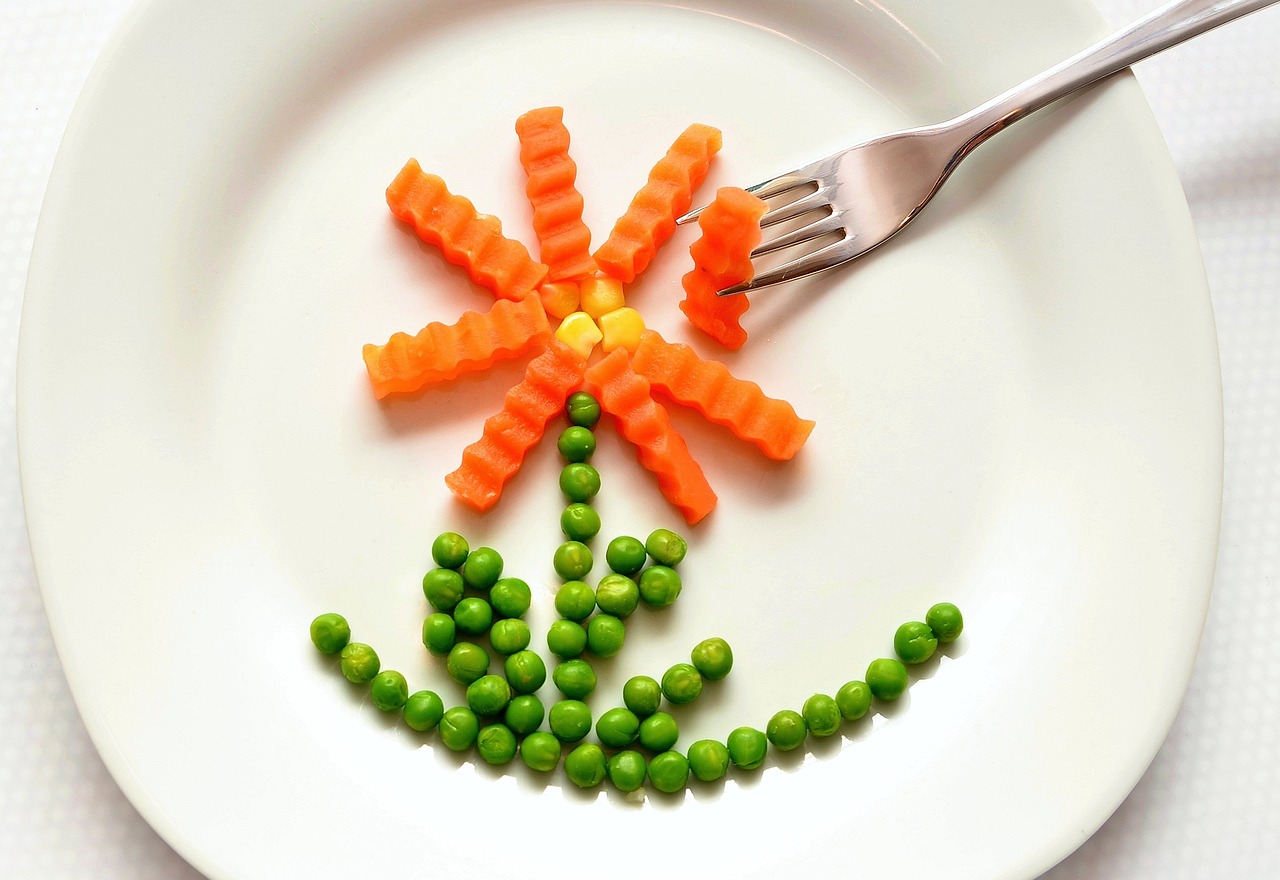
Transfer Printing Methods
Transfer printing is a fascinating technique that revolutionized the world of ceramic decoration, making it possible to reproduce intricate designs with remarkable precision. This method involves applying a printed design from a specially prepared paper onto the surface of a ceramic plate. The beauty of transfer printing lies in its ability to combine artistry with efficiency, allowing artisans to create detailed patterns that might be too complex to paint by hand. Imagine being able to replicate a stunning floral motif or a historical scene on a plate without the painstaking effort of hand-painting each detail!
The process begins with the creation of a design, which is printed onto a special transfer paper using a printer that can handle ceramic inks. Once the design is printed, it is often coated with a layer of glaze to protect the ink and enhance its vibrancy. The next step is where the magic happens: the printed paper is carefully placed onto the ceramic surface and then subjected to heat and pressure. This causes the ink to transfer from the paper to the plate, creating a seamless bond that ensures the design will last for years.
One of the most appealing aspects of transfer printing is its versatility. It can be used to create a wide range of styles, from traditional patterns that reflect cultural heritage to modern, abstract designs that push the boundaries of ceramic art. Furthermore, this technique allows for the mass production of decorative plates, making beautiful art accessible to a broader audience. Here’s a quick breakdown of the benefits of transfer printing:
- Precision: Achieves intricate designs that are difficult to replicate by hand.
- Efficiency: Allows for quicker production of multiple pieces with the same design.
- Accessibility: Makes high-quality decorative plates available at various price points.
However, while transfer printing offers numerous advantages, it’s important to note that the process requires a great deal of skill and knowledge. The artist must understand how different glazes interact with the printed designs and the firing process to ensure that the final product is both beautiful and durable. Additionally, there are various techniques within transfer printing, such as underglaze and overglaze printing, which can affect the final appearance of the piece. Underglaze printing involves applying the design before the glaze is added, while overglaze printing adds the design after the glaze has been applied, resulting in different textures and finishes.
In summary, transfer printing methods have transformed the ceramic industry, allowing for an explosion of creativity and accessibility. Whether you’re a collector or simply someone who appreciates beautiful art, understanding this technique can enhance your appreciation for the intricate designs found on ceramic decorative plates. Next time you admire a plate adorned with a stunning pattern, take a moment to consider the skill and artistry that went into its creation!
What is transfer printing?
Transfer printing is a technique used to apply printed designs from transfer paper onto ceramic surfaces, allowing for detailed and intricate patterns to be reproduced efficiently.
Can all ceramic plates be transfer printed?
Most ceramic plates can be transfer printed, but the process works best on surfaces that can withstand the heat and pressure required during the transfer process.
Is transfer printing durable?
Yes, when done correctly, transfer printing creates a durable bond between the design and the ceramic surface, ensuring that the artwork remains vibrant over time.
What are the different types of transfer printing?
There are various types of transfer printing, including underglaze and overglaze printing, each producing different effects and finishes on the ceramic piece.
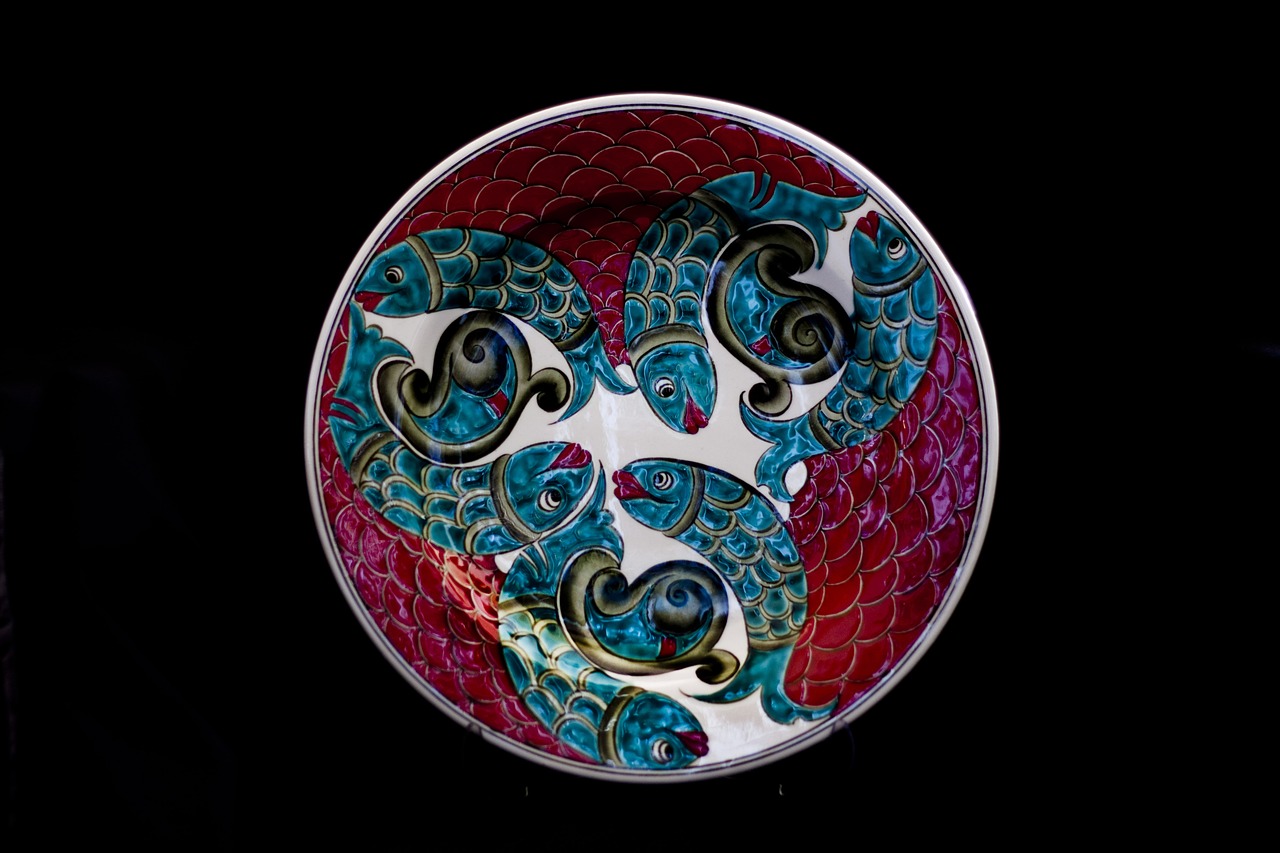
Preservation and Care of Ceramic Plates
Caring for your ceramic decorative plates is essential to ensure they remain beautiful and vibrant over the years. Just like a fine wine or a treasured painting, these plates deserve the best treatment to preserve their charm and artistry. One of the most important aspects of preservation is understanding how to clean and store them properly. With a few simple practices, you can keep your ceramic plates looking as stunning as the day they were crafted.
When it comes to cleaning, it's crucial to use the right techniques. Many ceramic plates, especially those adorned with intricate designs, can be sensitive to harsh chemicals and abrasive materials. To maintain their beauty, consider the following cleaning tips:
- Gentle Cleaning Agents: Use mild soap mixed with warm water. Avoid bleach or strong detergents that could damage the glaze.
- Soft Cloths: Opt for soft, non-abrasive cloths or sponges to wipe down your plates. This will help prevent scratches that can mar their surface.
- Hand Washing: Whenever possible, hand wash your plates instead of placing them in a dishwasher, as the high temperatures and harsh detergents can be detrimental.
After cleaning, it's equally important to store your ceramic decorative plates correctly. Improper storage can lead to chips, scratches, and other forms of damage. Here are some effective storage recommendations:
- Use Plate Stands: Displaying your plates on stands not only showcases their beauty but also keeps them safe from potential damage.
- Layering with Tissue: If stacking plates, place soft tissue paper between them to prevent scratching and chipping.
- Temperature Control: Store them in a climate-controlled environment to avoid extreme temperature fluctuations that can cause cracking.
Taking these steps will not only help preserve the aesthetic appeal of your ceramic plates but also maintain their historical value. Remember, these pieces are not just decorative items; they are artifacts of culture and artistry that deserve respect and care. By implementing proper cleaning and storage techniques, you ensure that future generations can enjoy and appreciate the beauty of these ceramic creations.
Q: Can I put my ceramic plates in the microwave?
A: It depends on the type of ceramic. Many decorative plates are not microwave-safe due to metallic glazes or decorations. Always check for any labels or guidelines provided by the manufacturer.
Q: How can I remove stains from my ceramic plates?
A: For stubborn stains, a paste made from baking soda and water can be effective. Apply it gently, let it sit for a few minutes, and then rinse with warm water.
Q: Are there specific types of ceramic plates that require special care?
A: Yes, plates that are hand-painted or have gold or silver trim often require more delicate handling and should be cleaned with extra care to avoid damaging the artwork.
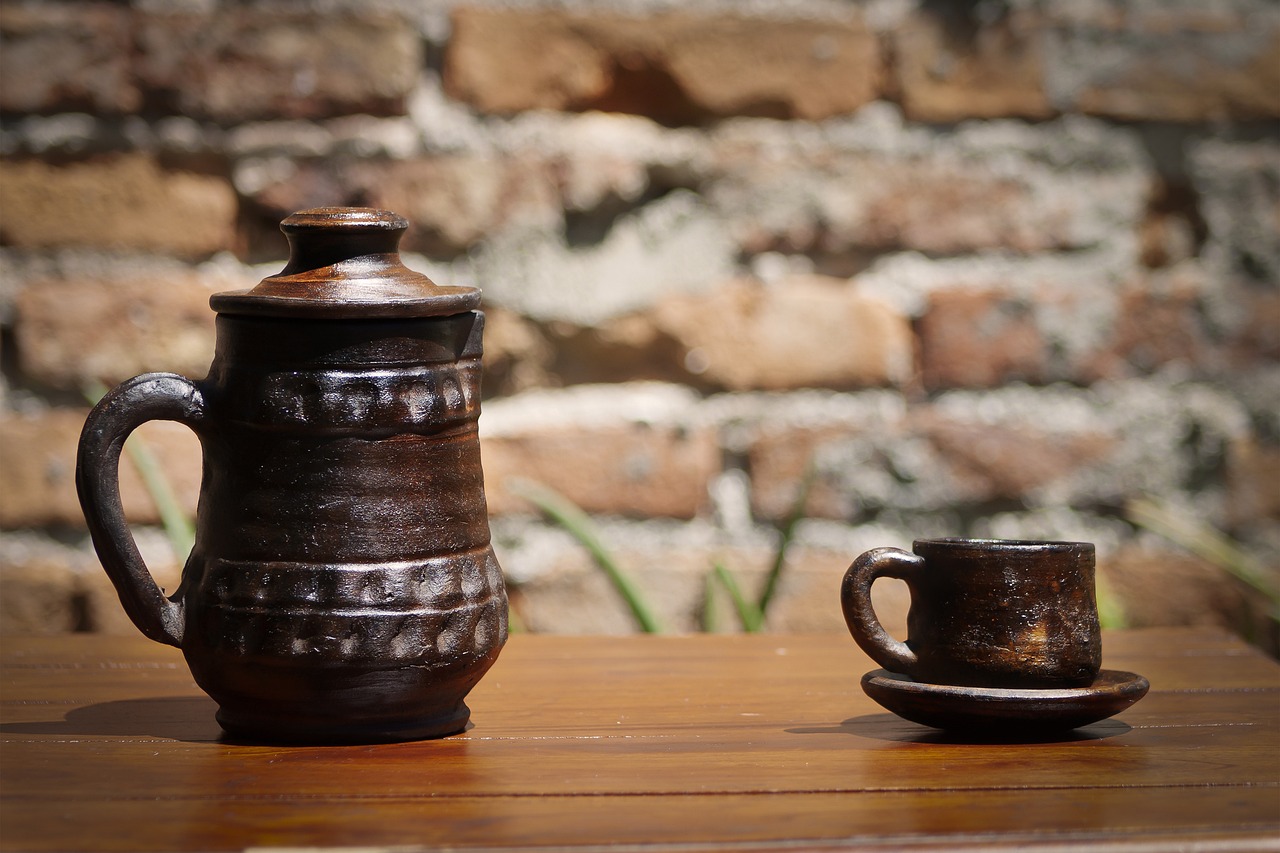
Cleaning Techniques
When it comes to maintaining the beauty and integrity of your ceramic decorative plates, understanding the right cleaning techniques is crucial. These plates are not just mere objects; they are often cherished pieces of art that tell a story. To keep them looking their best, you need to adopt a careful approach. First and foremost, always remember that gentleness is key. Harsh scrubbing can lead to scratches, dulling the vibrant glazes that make these plates so appealing.
One effective method for cleaning ceramic plates involves using a soft sponge or cloth along with warm, soapy water. You don’t want to use anything abrasive, as that can compromise the surface. Here’s a simple yet effective cleaning process:
- Step 1: Fill a basin with warm water and add a few drops of mild dish soap.
- Step 2: Soak the sponge or cloth in the soapy water, wringing it out to avoid excess moisture.
- Step 3: Gently wipe the surface of the plate, paying special attention to any areas with stubborn stains.
- Step 4: Rinse the plate with clean water to remove any soap residue.
- Step 5: Pat the plate dry with a soft towel, ensuring that no moisture remains, as this can lead to staining.
For more intricate designs or if your plates are particularly dirty, you might consider using a soft-bristle brush. This can help reach into the crevices without damaging the glaze. However, always test a small, inconspicuous area first to ensure that the brush won't scratch the surface.
It's also important to avoid using the dishwasher for your decorative plates unless they are specifically labeled as dishwasher-safe. The high temperatures and harsh detergents can cause fading or even cracking over time. Instead, hand washing is the safest bet. If your plates are adorned with gold or metallic accents, even more caution is required, as these can be particularly sensitive to harsh cleaning methods.
Lastly, for those who want to take extra precautions, consider using a protective coating. There are products available that can help seal the surface of your ceramic plates, making them more resistant to stains and easier to clean in the long run. Just make sure to follow the manufacturer’s instructions for application to avoid any adverse effects.
In summary, cleaning your ceramic decorative plates doesn’t have to be a daunting task. With the right techniques and a little bit of care, you can ensure that these beautiful pieces remain vibrant and intact for years to come. Remember, your plates are not just for decoration; they are a reflection of your taste and appreciation for art!
Here are some common questions people have about cleaning ceramic decorative plates:
- Can I use bleach to clean my ceramic plates? - It’s best to avoid bleach, as it can damage the glaze and color.
- Are all ceramic plates dishwasher safe? - Not all ceramic plates are dishwasher safe, especially those with decorative finishes. Always check the manufacturer’s guidelines.
- How can I remove tough stains? - For tough stains, try soaking the plate in warm soapy water for a few hours before gently scrubbing with a soft sponge.

Storage Recommendations
When it comes to preserving the beauty and integrity of your ceramic decorative plates, proper storage is essential. Think of your plates as treasured artworks; just as you wouldn't leave a painting exposed to the elements, your plates deserve the same level of care. Here are some crucial recommendations to ensure they remain in pristine condition:
First and foremost, always store your plates in a cool, dry place. Humidity can cause damage over time, leading to cracks or discoloration. A cupboard or display case that maintains a stable temperature is ideal. If you live in a particularly humid climate, consider using silica gel packets in your storage area to absorb excess moisture.
Additionally, it's important to avoid stacking your plates directly on top of one another. Doing so can lead to scratches and chips, which can mar their beauty. Instead, use protective materials between each plate. Soft cloths, bubble wrap, or even paper plates can act as buffers, preventing direct contact. If you have a collection of plates, consider investing in a plate rack or display stand that allows for vertical storage. This not only protects the plates but also showcases them beautifully.
For those who have particularly valuable or delicate pieces, consider using a padded storage box. These boxes provide an additional layer of protection against dust and potential impacts. When packing your plates, wrap each one individually in acid-free tissue paper or bubble wrap, ensuring that the edges are well-protected. This method allows for easy access while keeping your plates safe from harm.
Lastly, always label your storage boxes or shelves. This simple step helps you quickly identify which plates are stored where, reducing the risk of accidental damage while searching for a specific piece. By following these recommendations, you can ensure that your ceramic decorative plates remain a source of joy and beauty for years to come.
- How often should I clean my ceramic decorative plates?
It’s best to clean them regularly, especially if they are on display. Dust them gently with a soft cloth and clean more thoroughly as needed, using mild soap and water. - Can I use my decorative plates for serving food?
While some decorative plates are food-safe, many are not. Always check the manufacturer's guidelines before using them for food service. - What should I do if my plate gets chipped?
For minor chips, you can use a ceramic repair kit. However, for significant damage, consult a professional restorer to maintain the plate's value.
Frequently Asked Questions
- What are ceramic decorative plates made of?
Ceramic decorative plates are primarily made from various types of clay, including earthenware, stoneware, and porcelain. Each type of clay brings its own unique properties to the plate, influencing its appearance and durability. Additionally, glazes and pigments are used to enhance the aesthetic appeal and functionality of these plates.
- How do I care for my ceramic decorative plates?
To ensure the longevity of your ceramic decorative plates, it’s essential to handle them with care. Clean them using a soft cloth and mild soap, avoiding abrasive materials that can scratch the surface. For storage, keep them in a safe place, using padding to prevent chips and scratches. This will help maintain their beauty for years to come.
- What are some popular decorative techniques for ceramic plates?
There are several artistic techniques used in decorating ceramic plates, including hand-painting, carving, and transfer printing. Hand-painting allows for unique, personalized designs, while carving can create intricate textures. Transfer printing is a method that reproduces detailed images, making it easier to produce decorative plates with elaborate designs.
- Are ceramic decorative plates functional or purely decorative?
Ceramic decorative plates can serve both purposes! While many are designed to be visually appealing and showcase artistic expression, they can also be used for serving food or as functional items in your home. The balance between functionality and decorative appeal is one of the charms of ceramic plates.
- What is the historical significance of ceramic decorative plates?
Ceramic decorative plates have a rich history, reflecting the cultural values and artistic innovations of various civilizations. From ancient Chinese and Greek designs to modern interpretations, these plates often tell stories and embody the heritage of the communities that created them. They serve as a testament to the evolution of artistry over time.
- Can I display ceramic decorative plates on my wall?
Absolutely! Many people choose to display ceramic decorative plates as wall art. You can use plate hangers or specialized wall mounts to showcase them safely. This not only enhances your home decor but also allows you to appreciate the artistry of these decorative pieces on a daily basis.
- What types of designs are common in ceramic decorative plates?
The designs on ceramic decorative plates can vary widely, influenced by cultural motifs, historical styles, and personal creativity. Common themes include floral patterns, geometric shapes, and intricate scenes that reflect cultural stories or beliefs. Each plate can be a unique expression of artistry and tradition.



















